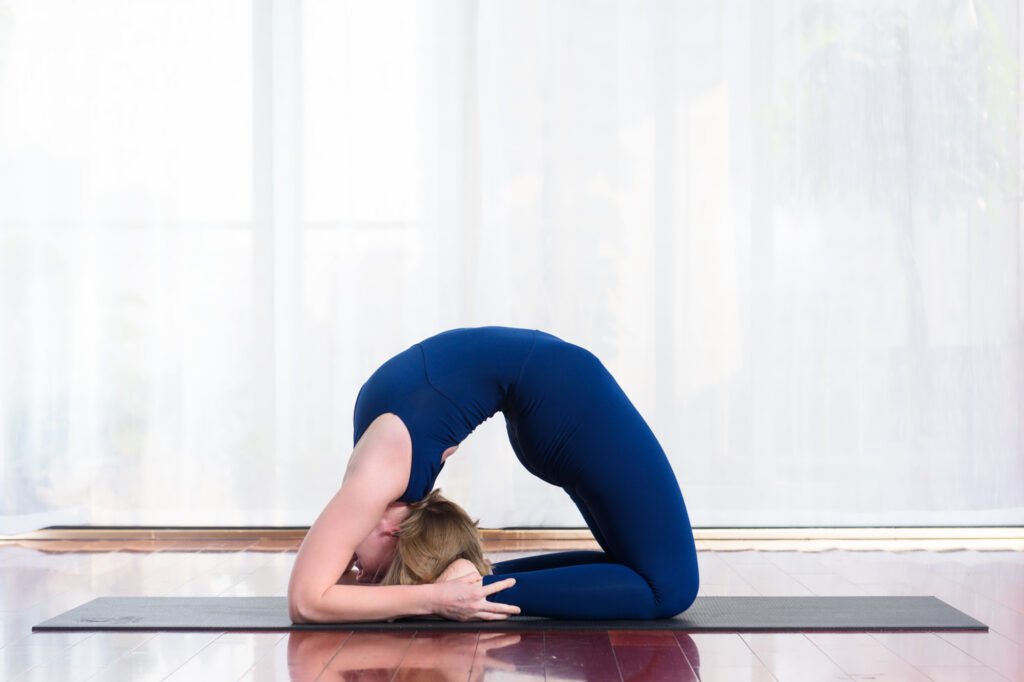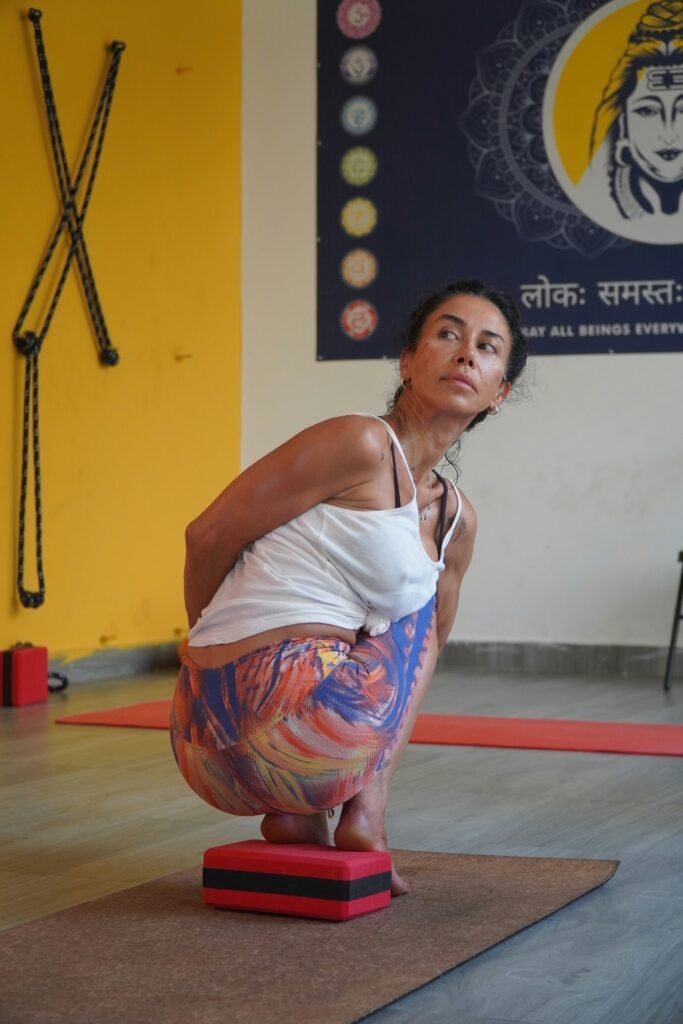Unlock the Secrets of Ashtanga Yoga: Definition, Principles, and How to Practice
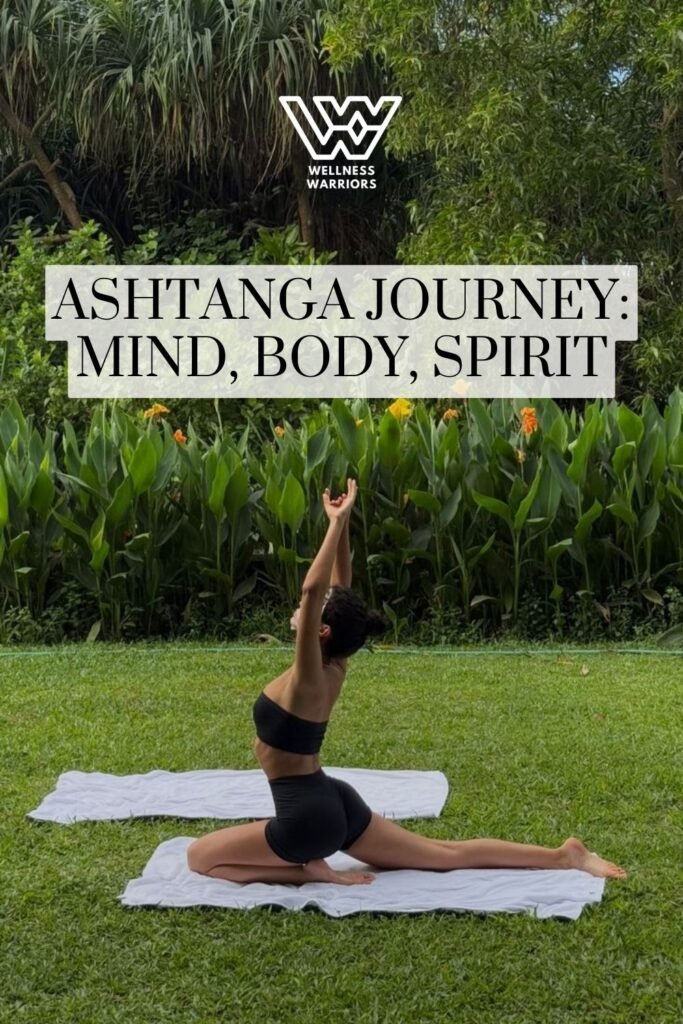
Hi there! Have you tried an ashtanga vinyasa yoga class? It is definitely one of the most challenging style of Yoga. In an ashtanga yoga class, you will learn to push your limits and you will grow as a student. The system of yoga Ashtanga is composed of a series ( so you always practice the same ), till you master the sequence. Then you can jump to the next set sequence of postures. You will need physical strength, a high mental state , and a strong determination.
You can try Ashtanga Mysore style too, with more help from the teacher and at your own pace.
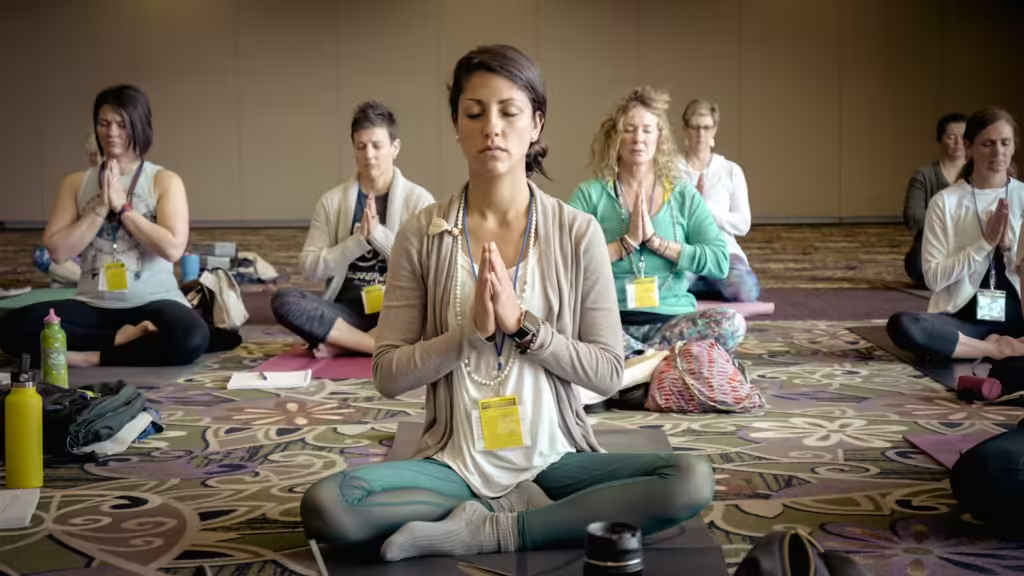
Ashtanga Yoga: A Transformative Journey of Mind, Body, and Spirit
Ashtanga Yoga, a dynamic and structured form of yoga, has captivated practitioners worldwide with its powerful blend of physical challenge and spiritual depth. This ancient practice offers a transformative journey that harmonizes the body, mind, and spirit, making it a cornerstone of modern wellness routines. In this comprehensive exploration, we’ll delve into the rich tapestry of Ashtanga Yoga, uncovering its origins, philosophy, practice, and the myriad benefits it offers to those who embrace its path.
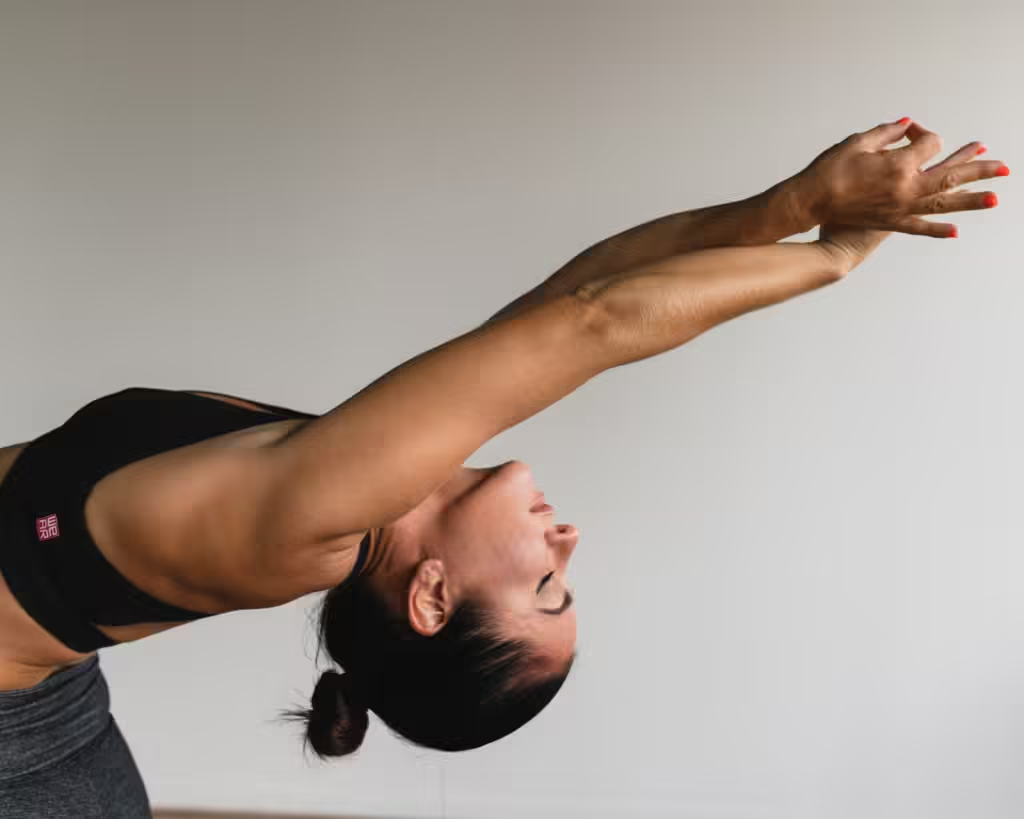
The Roots of Ashtanga: A Journey Through Time
The story of Ashtanga Yoga is one that weaves together ancient wisdom and modern innovation. Its origins are often traced back to an enigmatic text known as the “Yoga Korunta,” attributed to the sage Vamana Rishi. This text, shrouded in mystery due to the absence of physical copies, is said to have outlined a series of asanas (postures) and vinyasas (breath-synchronized movements) that form the foundation of Ashtanga Yoga.
While the existence of the Yoga Korunta remains a subject of debate, its influence on the development of Ashtanga Yoga is undeniable. Patanjali, author of the Yoga Sutras, which form the philosophical foundation of Ashtanga Yoga The modern incarnation of Ashtanga Yoga owes much to the pioneering work of Tirumalai Krishnamacharya (1888-1989), often hailed as the “father of modern yoga”.

Krishnamacharya’s innovative approach to yoga, which he taught at the Mysore Palace in India, laid the groundwork for what would become Ashtanga Yoga. His teachings emphasized the dynamic linking of movements between asanas, known as vinyasa, a hallmark of the Ashtanga practice.
However, it was Krishnamacharya’s devoted student, Sri K. Pattabhi Jois (1915-2009), who truly brought Ashtanga Yoga to the global stage. Jois, who began studying under Krishnamacharya in the 1930s, established the Ashtanga Yoga Research Institute in Mysore, India, in 1948.
His unwavering commitment to the sequences taught by Krishnamacharya and his emphasis on the importance of a set series of postures practiced in a specific order became the defining features of Ashtanga Yoga as we know it today.
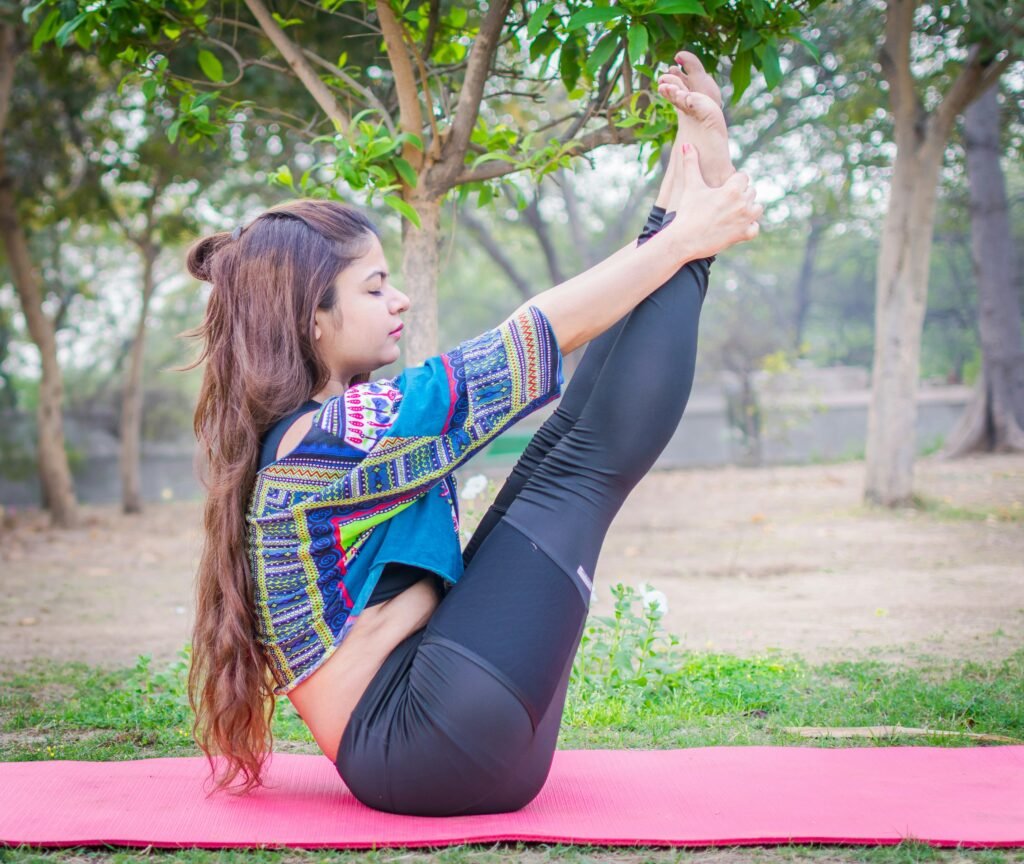
The Philosophy of Ashtanga: Eight Limbs to Enlightenment
At its core, Ashtanga Yoga is deeply rooted in the philosophical teachings of Patanjali’s Yoga Sutras, an ancient text that outlines the eight-fold path to spiritual enlightenment. The term “Ashtanga” itself translates to “eight limbs” in Sanskrit, directly referencing this comprehensive approach to yoga practice.
The eight limbs of yoga, as outlined by Patanjali, are:
1. Yama: Ethical restraints or moral codes
2. Niyama: Personal observances or disciplines
3. Asana: Physical postures
4. Pranayama: Breath control
5. Pratyahara: Withdrawal of the senses
6. Dharana: Concentration
7. Dhyana: Meditation
8. Samadhi: Enlightenment or bliss
These limbs form the philosophical backbone of Ashtanga Yoga, guiding practitioners through a holistic journey that encompasses ethical living, physical health, and spiritual growth. The practice emphasizes the integration of all these aspects, recognizing that true transformation comes from a balanced approach to yoga that goes beyond mere physical exercise.
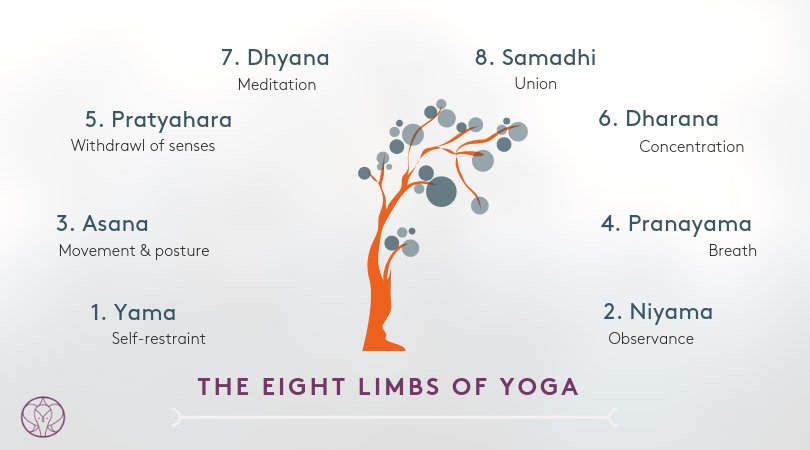
The Practice: A Symphony of Breath, Movement, and Focus
Ashtanga Yoga is renowned for its structured and physically demanding practice. The heart of this practice lies in its six series, each designed to progressively prepare the body and mind for higher levels of yoga. These series are:
✔ Primary Series (Yoga Chikitsa – Yoga Therapy): Focuses on detoxifying the body and aligning the musculoskeletal system.
✔ Intermediate Series (Nadi Shodhana – Nerve Cleansing): Targets the nervous system and subtle energy channel .
✔Advanced Series A, B, C, and D (Sthira Bhaga – Steady Strength): Introduces more intricate and demanding poses, refining control over body and mind.
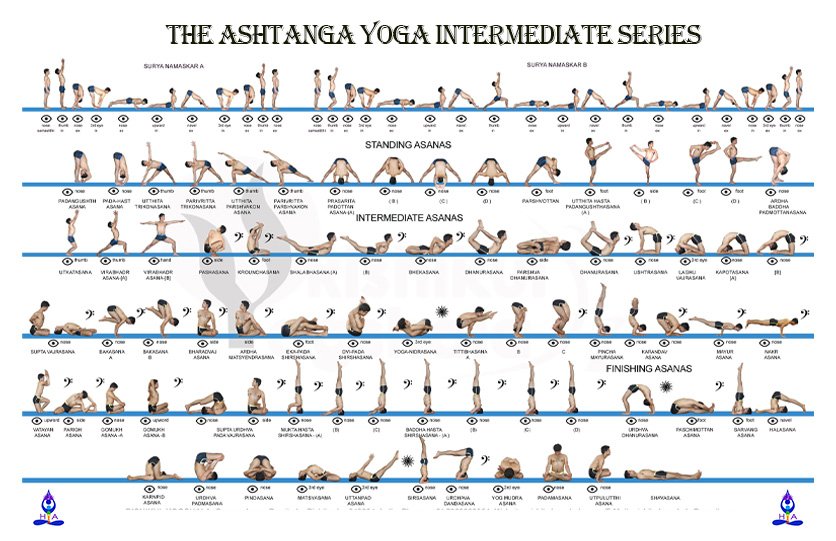
The practice is characterized by several key components that set it apart from other yoga styles:
✔ Vinyasa: The synchronization of breath with movement, creating a flowing sequence of postures.
✔ Ujjayi Breathing: A deep, audible breathing technique used throughout the practice to maintain focus and create internal heat.
✔ Bandhas: Internal energy locks that help direct energy within the body and create stability.
✔ Drishti: Specific gaze points used to enhance concentration and direct energy flow.
One of the unique aspects of Ashtanga Yoga is its emphasis on self-practice, particularly in the Mysore-style classes. In this setting, students learn the sequences gradually under the personalized guidance of a teacher, allowing for individual adaptation and personal growth.
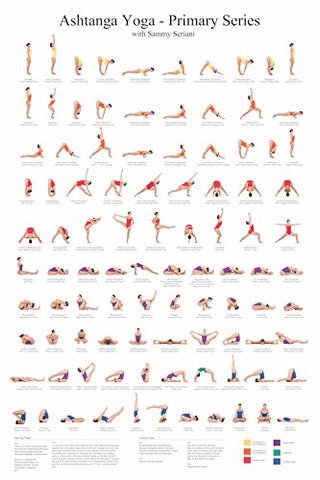
The Ashtanga Yoga Series: A Progressive Journey
Ashtanga Yoga is structured into six distinct series, each designed to progressively challenge and transform the practitioner. These series are:
1. Primary Series (Yoga Chikitsa)
2. Intermediate Series (Nadi Shodhana)
3. Advanced Series A (Sthira Bhaga)
4. Advanced Series B
5. Advanced Series C
6. Advanced Series D
Each series builds upon the skills and strength developed in the previous one, creating a systematic approach to yoga practice.
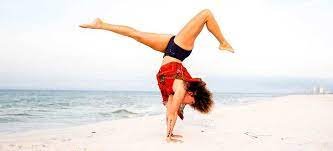
The Primary Series: Yoga Chikitsa
The Primary Series, also known as Yoga Chikitsa or “yoga therapy,” is the foundation of Ashtanga Yoga practice. This series is designed to detoxify and align the body, building strength, flexibility, and stamina.
The Primary Series consists of approximately 75 poses, including:
1. Surya Namaskara A and B (Sun Salutations)
2. Standing Poses (e.g., Utthita Trikonasana, Parivritta Trikonasana)
3. Seated Poses (e.g., Janu Sirsasana A, B, C)
4. Inversions (e.g., Salamba Sarvangasana, Halasana)
5. Backbends (e.g., Urdhva Dhanurasana)
6. Finishing Sequence (e.g., Padmasana, Utpluthih)
The Primary Series focuses on forward bends, twists, and hip openers, which help to cleanse and strengthen the body’s systems .
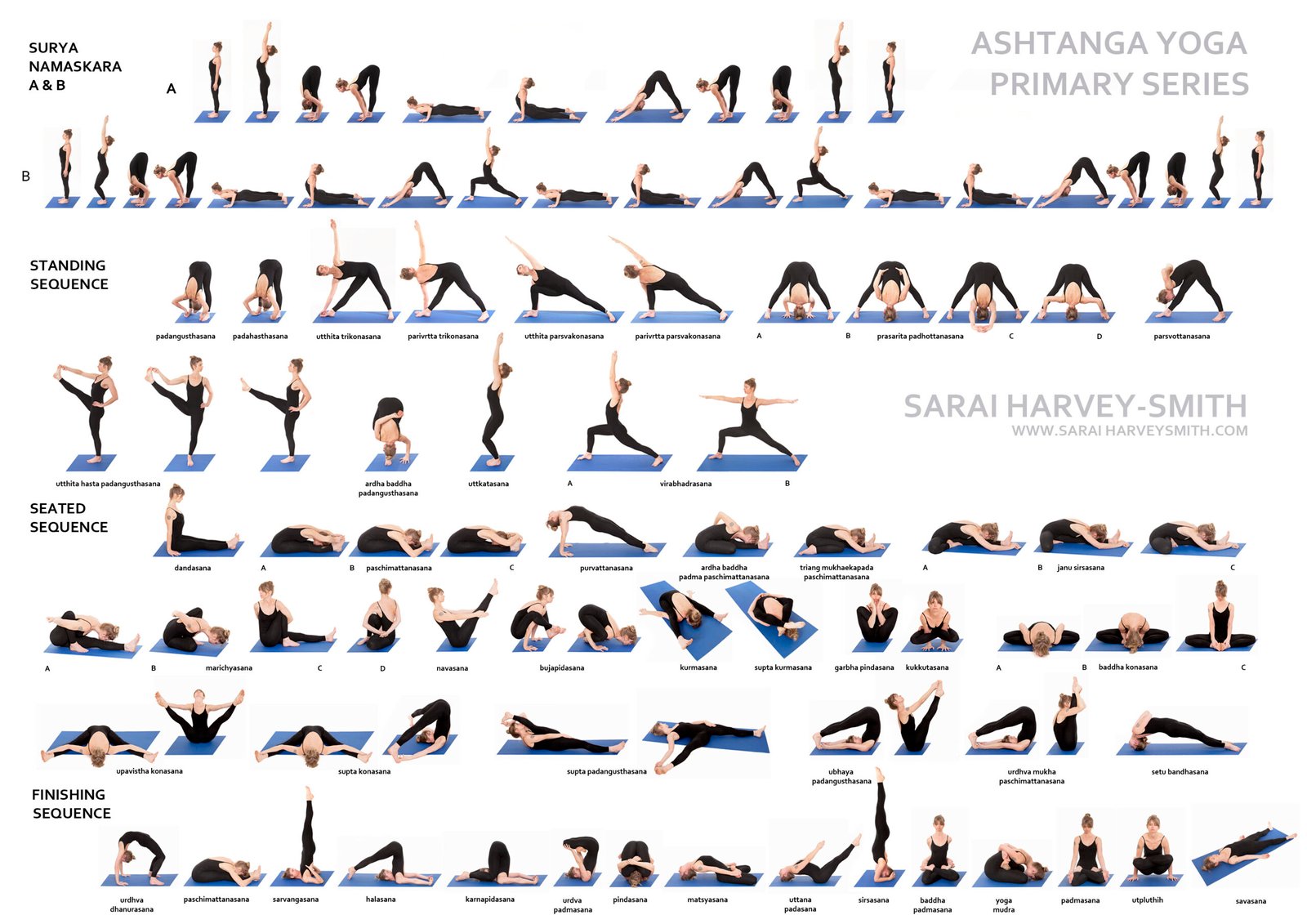
The Intermediate Series: Nadi Shodhana
The Intermediate Series, known as Nadi Shodhana or “nerve cleansing,” builds upon the foundation laid in the Primary Series. This sequence aims to purify the nervous system by focusing on backbends and more challenging poses.
Some key asanas in this series include:
1. Pashasana (Noose Pose)
2. Kapotasana (Pigeon Pose)
3. Pincha Mayurasana (Forearm Stand)
4. Dwi Pada Sirsasana (Both Legs Behind Head Pose)
5. Yoganidrasana (Yogic Sleep Pose)
The Intermediate Series introduces more complex twists, arm balances, and backbends, further developing the practitioner’s strength and flexibility.
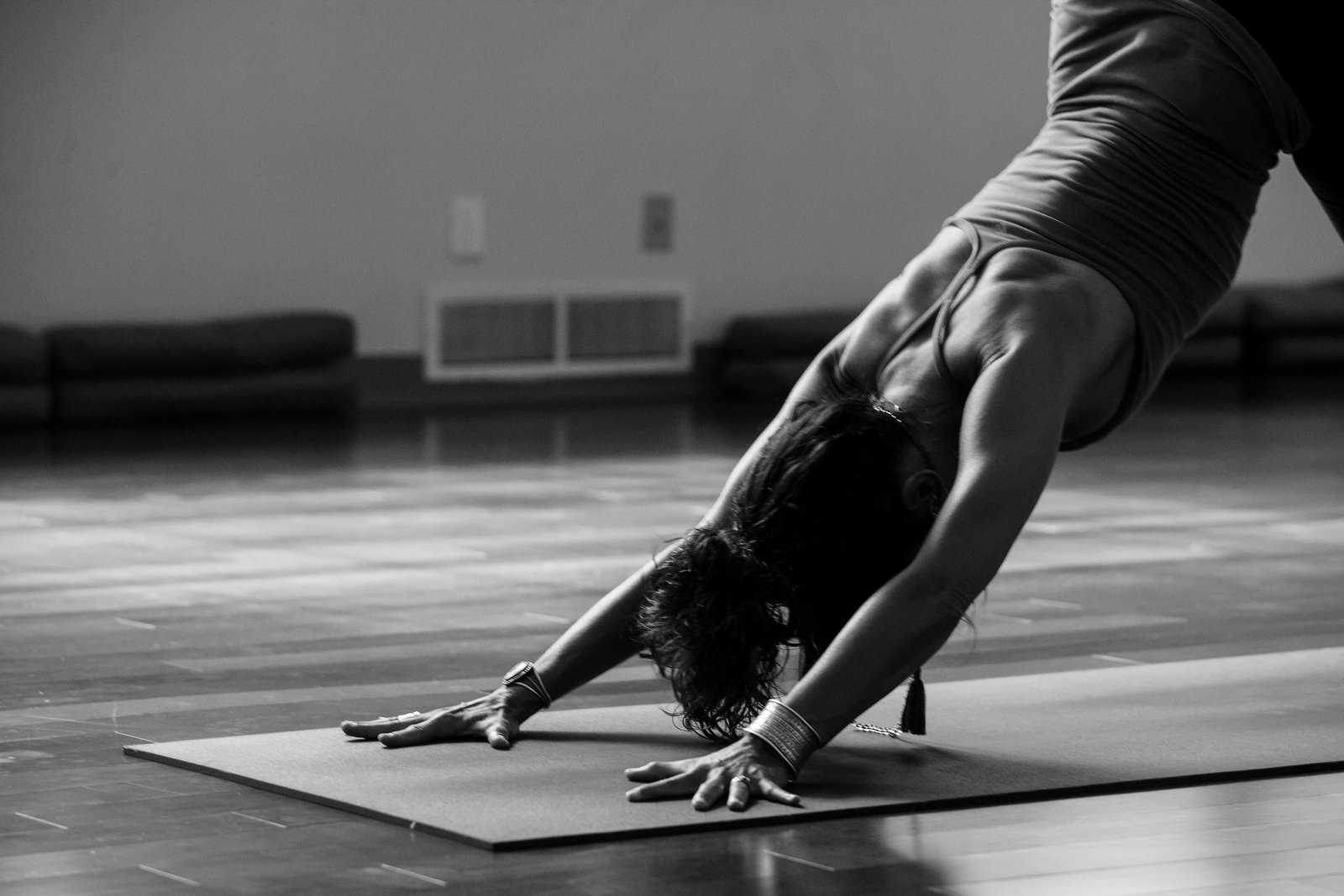
The Advanced Series: Sthira Bhaga
The Advanced Series, collectively known as Sthira Bhaga or “Divine Stability,” is divided into four parts (A, B, C, and D). These series are designed for highly experienced practitioners and involve extremely challenging postures that require exceptional strength, flexibility, and balance.
The Advanced A Series, for example, includes poses such as:
1. Vasishthasana (Side Plank Pose)
2. Kasyapasana (Sage Kasyapa’s Pose)
3. Visvamitrasana (Pose Dedicated to Visvamitra)
4. Eka Pada Raja Kapotasana (One-Legged King Pigeon Pose)
These advanced sequences continue to build on the principles established in the earlier series, pushing the boundaries of physical and mental capabilities.
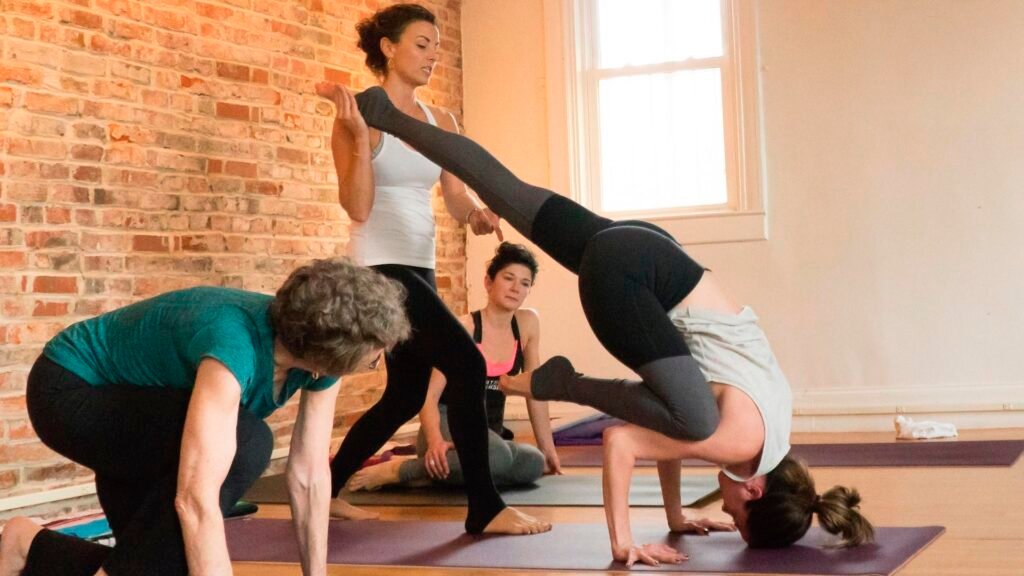
The Role of Vinyasa, Ujjayi Pranayama, and Bandhas
Ashtanga Yoga is distinguished by its unique approach to practice, which integrates three key elements:
1. Vinyasa: The synchronization of breath with movement, creating a flowing sequence of postures. This generates internal heat, purifying the body and enhancing focus.
2. Ujjayi Pranayama: A specific breathing technique that involves a slight constriction of the throat, producing an oceanic sound. This breath helps maintain focus and regulates the body’s internal temperature.
3. Bandhas: Internal energy locks used to control and direct the flow of prana (life energy) within the body. The three primary bandhas are Mula Bandha (Root Lock), Uddiyana Bandha (Abdominal Lock), and Jalandhara Bandha (Throat Lock).
These elements work in harmony to transform the practice from a series of physical postures into a moving meditation, purifying the body, focusing the mind, and deepening the spiritual aspects of the practice.
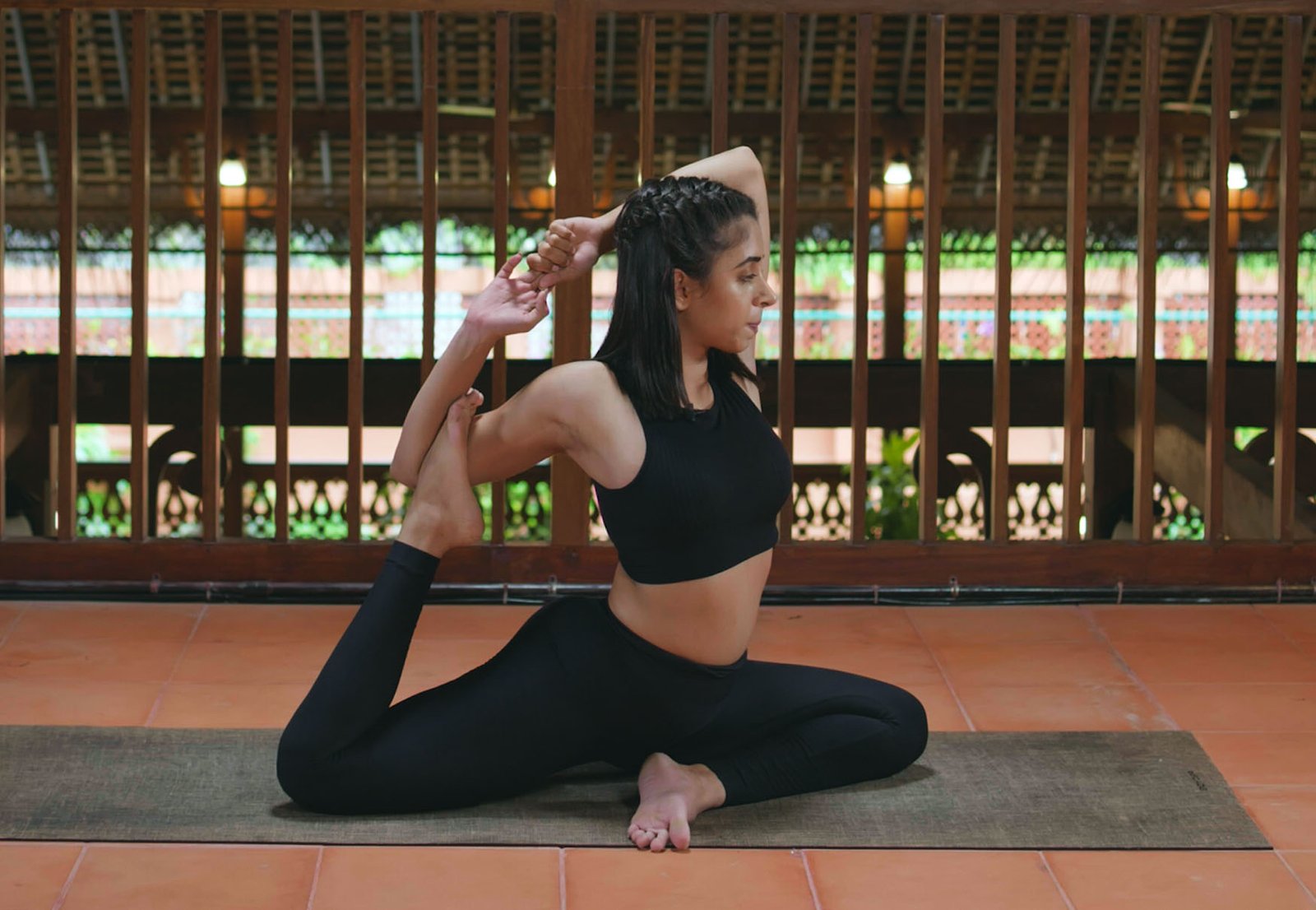
Complete list of Asanas ( poses ) in every series
1. Primary Series (Yoga Chikitsa)
The Primary Series, also known as Yoga Chikitsa (Yoga Therapy), is designed to detoxify and align the body. It serves as the foundation for the practice and is suitable for all practitioners.
Sun Salutations (Surya Namaskara)
1. Surya Namaskara A: (5 rounds)
- Tadasana (Mountain Pose)
- Uttanasana (Standing Forward Bend)
- Ardha Uttanasana (Half Standing Forward Bend)
- Chaturanga Dandasana (Four-Limbed Staff Pose)
- Urdhva Mukha Svanasana (Upward-Facing Dog)
- Adho Mukha Svanasana (Downward-Facing Dog)
2. Tadasana (Mountain Pose)
3. Uttanasana (Standing Forward Bend)
4. Ardha Uttanasana (Half Standing Forward Bend)
5. Chaturanga Dandasana (Four-Limbed Staff Pose)
6. Urdhva Mukha Svanasana (Upward-Facing Dog)
7. Adho Mukha Svanasana (Downward-Facing Dog)
8. Surya Namaskara B (5 rounds)Utkatasana (Chair Pose)Virabhadrasana I (Warrior I)
9. Utkatasana (Chair Pose)
10. Virabhadrasana I (Warrior I)
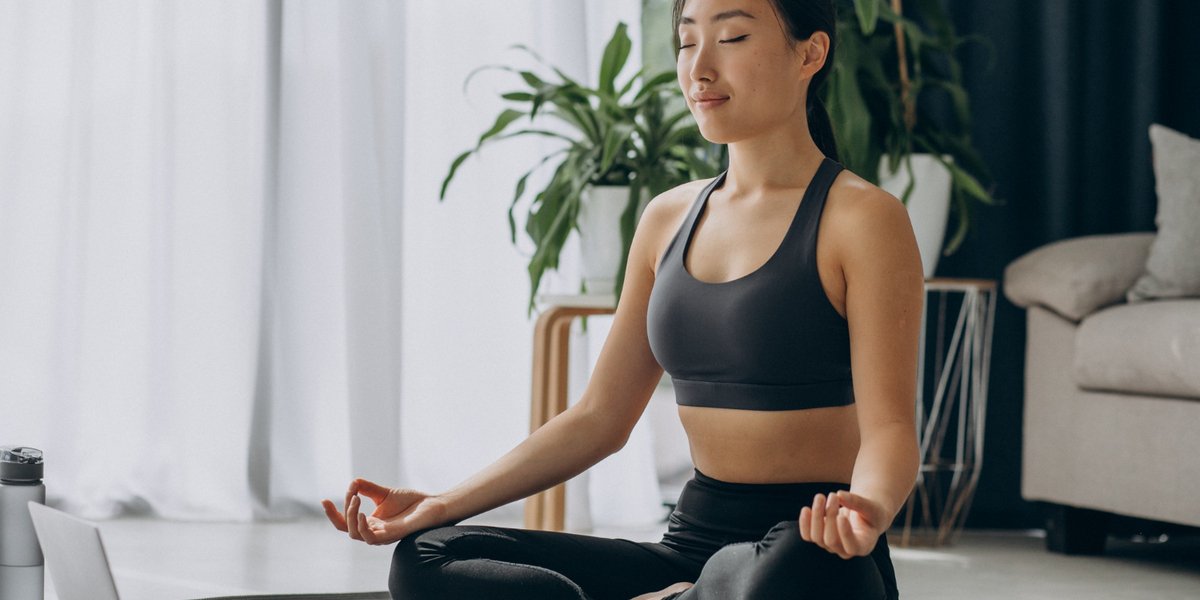
Standing Poses
1. Padangusthasana (Big Toe Pose)
2. Pada Hastasana (Hands Under Feet Pose)
3. Utthita Trikonasana (Extended Triangle Pose)
4. Parivrtta Trikonasana (Revolved Triangle Pose)
5. Utthita Parsvakonasana (Extended Side Angle Pose)
6. Parivrtta Parsvakonasana (Revolved Side Angle Pose)
7. Prasarita Padottanasana A, B, C, D (Wide-Legged Forward Bend)
8. Parsvottanasana (Intense Side Stretch Pose)
9. Utthita Hasta Padangusthasana (Extended Hand to Big Toe Pose)
10. Ardha Baddha Padmottanasana (Half Bound Lotus Standing Forward Bend)
11. Utkatasana (Chair Pose)
12. Virabhadrasana A (Warrior I)
13. Virabhadrasana B (Warrior II)
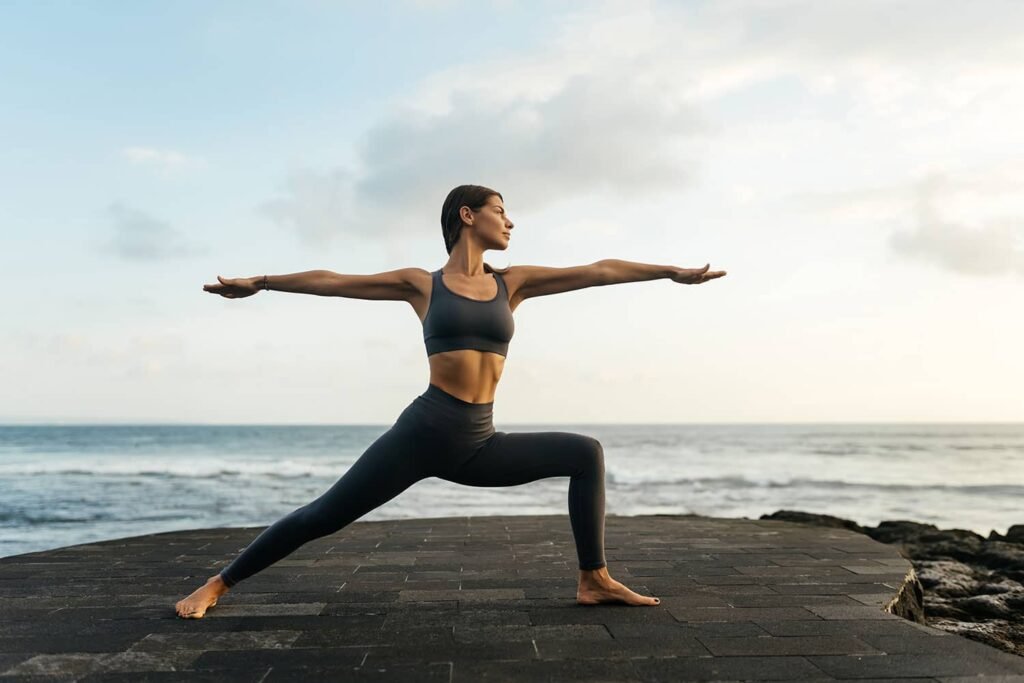
Seated Poses
1. Dandasana (Staff Pose)
2. Paschimottanasana A, B, C (Seated Forward Bend)
3. Purvottanasana (Upward Plank Pose)
4. Ardha Baddha Padma Paschimottanasana (Half Bound Lotus Seated Forward Bend)
5. Triang Mukhaikapada Paschimottanasana (Three-Limbed Forward Bend)
6. Janu Sirsasana A, B, C (Head-to-Knee Pose)
7. Marichyasana A, B, C, D (Pose Dedicated to the Sage Marichi)
8. Navasana (Boat Pose)
9. Bhujapidasana (Shoulder-Pressing Pose)
10. Kurmasana (Tortoise Pose)
11. Supta Kurmasana (Reclining Tortoise Pose)
12. Garbha Pindasana (Embryo Pose)
13. Kukkutasana (Cockerel Pose)
14. Baddha Konasana (Bound Angle Pose)
15. Upavishta Konasana (Seated Wide Angle Pose)
16. Supta Konasana (Reclining Wide Angle Pose)
17. Supta Padangusthasana (Reclining Hand-to-Big-Toe Pose)
18. Ubhaya Padangusthasana (Both Big Toe Pose)
19. Urdhva Mukha Paschimottanasana (Upward Facing Intense West Stretch Pose)
20. Setu Bandhasana (Bridge Pose)
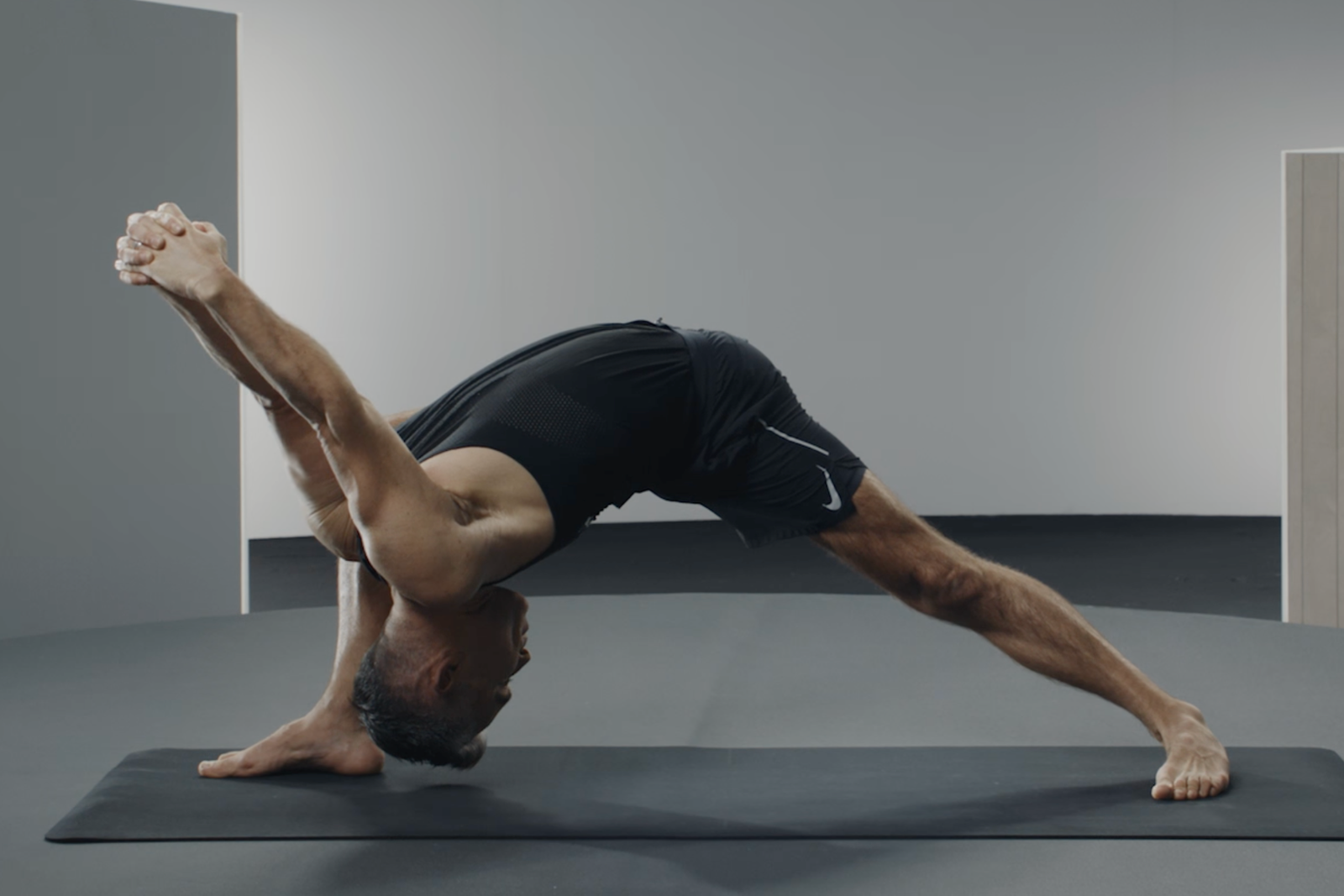
Finishing Poses
1. Urdhva Dhanurasana (Upward Bow Pose)
2. Paschimottanasana (Seated Forward Bend)
3. Salamba Sarvangasana (Supported Shoulderstand)
4. Halasana (Plow Pose)
5. Karnapidasana (Ear Pressure Pose)
6. Urdhva Padmasana (Upward Lotus Pose)
7. Pindasana (Embryo Pose)
8. Matsyasana (Fish Pose)
9. Uttana Padasana (Intense Leg Stretch Pose)
10. Shirshasana (Headstand)
11. Baddha Padmasana (Bound Lotus Pose)
12. Padmasana (Lotus Pose)
13. Tolasana (Scales Pose)
14. Shavasana (Corpse Pose)
This sequence is designed to be practiced in a specific order, with each pose preparing the body for the next. The practice emphasizes the synchronization of breath with movement (vinyasa) and the use of internal energy locks (bandhas) to create stability and energy flow within the body.
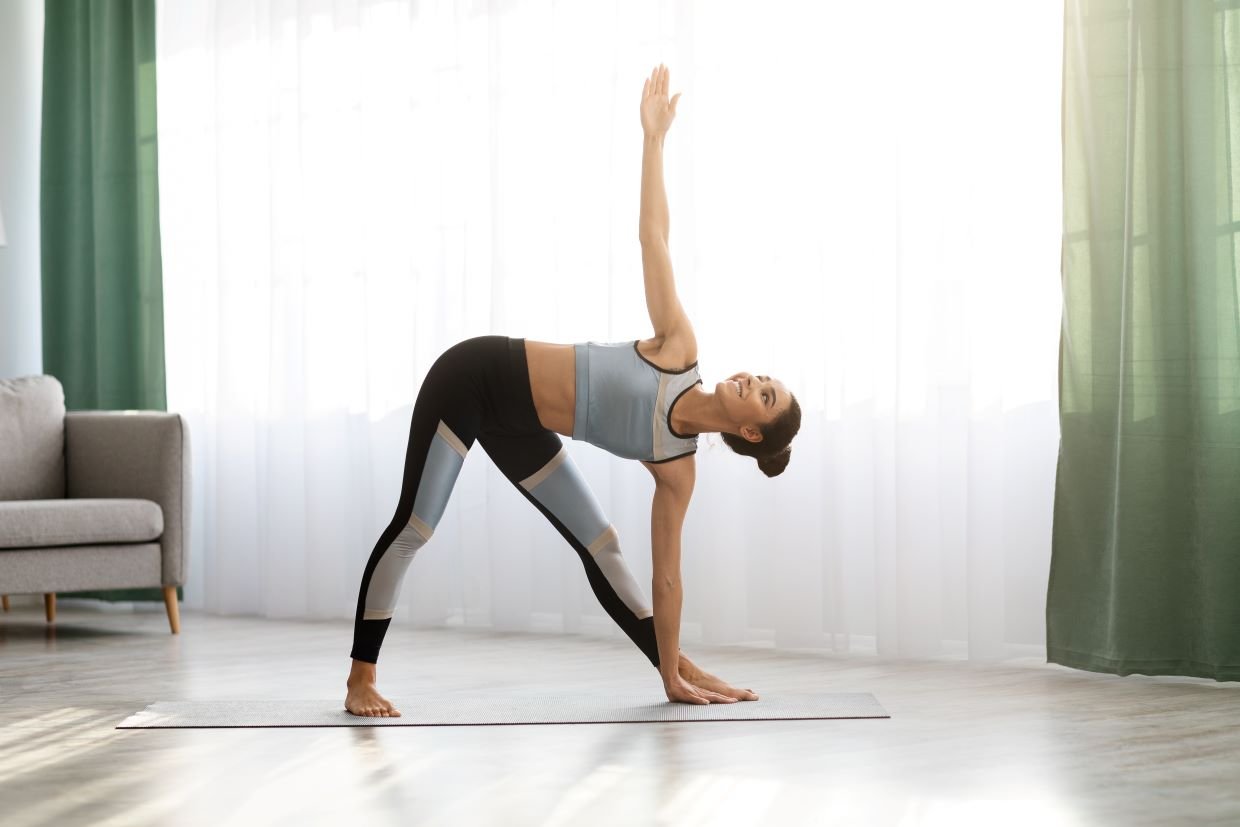
2. Intermediate Series (Nadi Shodhana)
The Intermediate Series, known as Nadi Shodhana, is designed to purify the nervous system. It builds upon the Primary Series and includes more complex postures.
Standing Postures
1. Samasthiti (Standing still)
2. Surya Namaskara (A & B) (Sun salutation)
3. Padangushtasana (Thumb to foot pose)
4. Pada Hastasana (Hand to foot pose)
5. Utthita Trikonasana (Extended triangle pose)
6. Parivritta Trikonasana (Revolved extended triangle pose)
7. Utthita Parshvakonasana (Extended sideway angle pose)
8. Parivritta Parshvakonasana (Revolved extended sideway angle pose)
9. Prasarita Padottanasana (A, B, C, D) (Spread feet stretching pose)
10. Parshvottanasana (Sideways stretching pose)
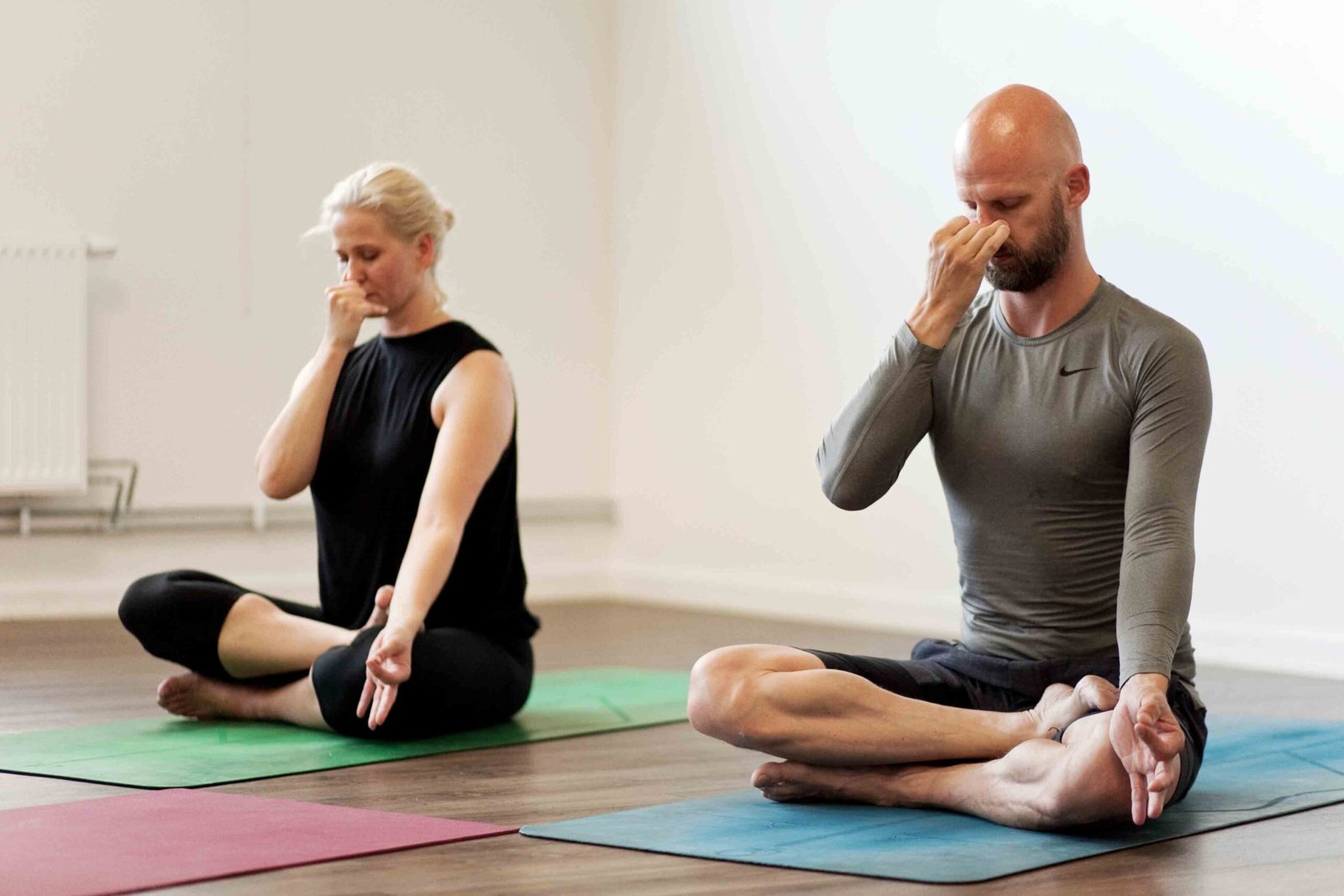
Intermediate Postures
1. Pashasana (Noose pose)
2. Krounchasana (Heron pose)
3. Shalabhasana A, B (Locust pose)
4. Bhekasana (Frog pose)
5. Dhanurasana (Bow pose)
6. Parsvadhanurasana (Side bow pose)
7. Ustrasana (Camel pose)
8. Laghu Vajrasana (Little thunderbolt pose)
9. Kapotasana (Dove pose)
10. Supta Vajrasana (Sleeping thunderbolt pose)
11. Bakasana (Crow pose)
12. Bharadvajasana (Bharadvāja’s pose)
13. Ardha Matsyendraasana (Half Matsyendraasana’s pose)
14. Ekapada Sirsasana A, B, C (One foot behind the head pose)
15. Dwipada Sirsasana B (Two feet behind the head pose)
16. Yoga Nidrasana (Yoga sleep pose)
17. Tittibhasana A, B, C (Firefly pose)
18. Pincha Mayurasana (Peacock tail pose)
19. Karandavasana (Himalayan goose pose)
20. Mayurasana (Peacock pose)
21. Nakrasana (Crocodile pose)
22. Vatayanasana (Horse face pose)
23. Parighasana (Iron bar pose)
24. Gomukhasana A, B, C (Cow face pose)
25. Supta Urdhvapada Vajrasana A, B (Sleeping elevated Vajra’s pose)
26. Mukta Hasta Sirsasana A, B, C (Open hand headstand)
27. Baddha Hasta Sirsasana A, B, C, D (Bound hand headstand)
28. Urdhva Dhanurasana (Elevated bow pose)
29. Drop back to Urdhva Dhanurasana
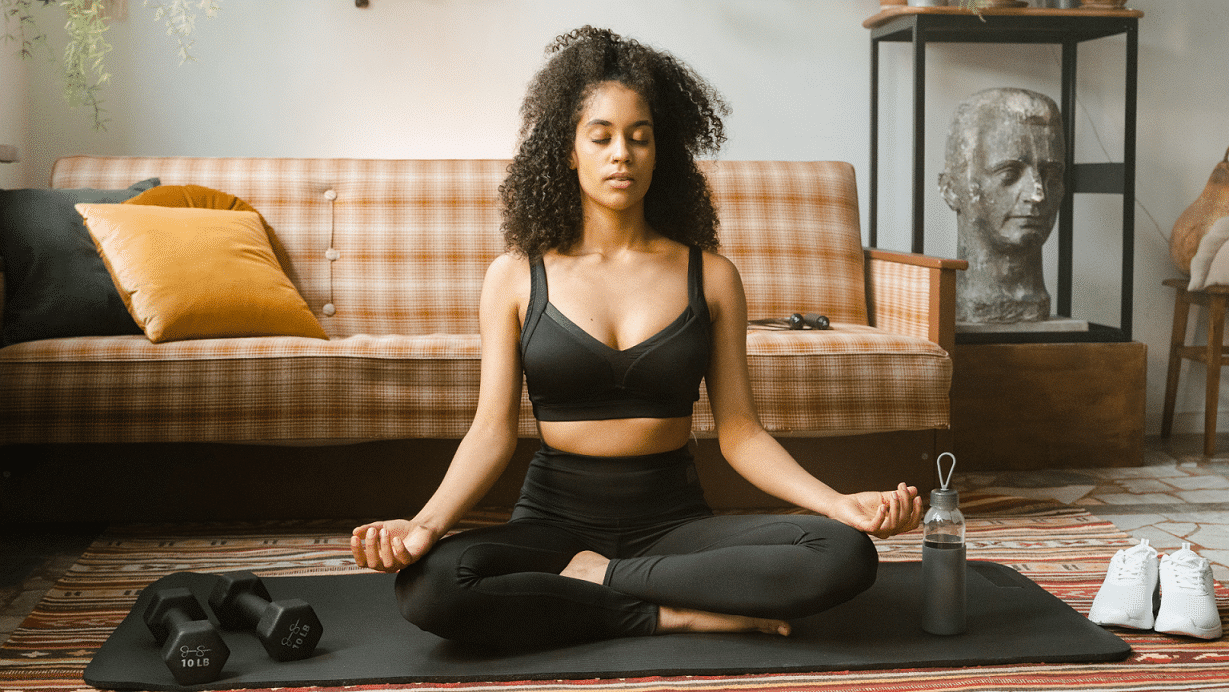
Finishing Poses
1. Paschimattanasana (West-Back (extended-intense) stretching pose)
2. Salamba Sarvangasana (All limbs pose)
3. Halasana (Plow pose)
4. Karnapidasana (Ear pressure pose)
5. Urdhva Padmasana (Elevated lotus pose)
6. Pindasana (Embryo pose)
7. Matsyasana (Fish pose)
8. Uttana Padasana (Extended foot pose)
9. Shirshasana (Head standing pose)
10. Baddha Padmasana (Bound lotus pose)
11. Yoga Mudra (Yoga gesture)
12. Padmasana (Lotus pose)
13. Uth Pluthi (Tolasana) (Sprung up)
14. Shavasana (Corpse pose)
This sequence is designed to enhance flexibility, strength, and energetic balance.
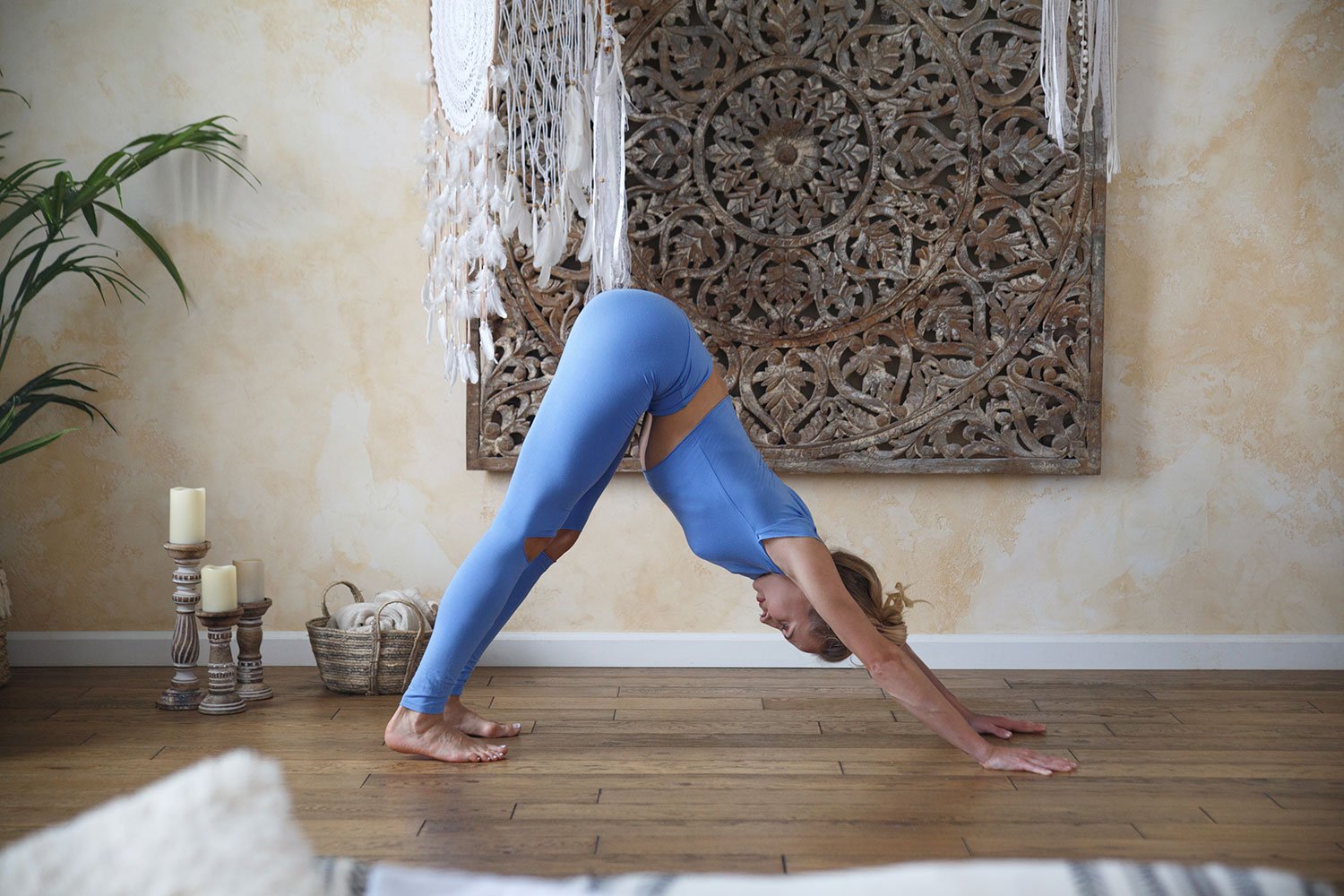
3. Advanced Series A (Sthira Bhaga)
The Advanced Series A, also known as the Third Series, is a challenging sequence that focuses on “sublime serenity” or “divine stability”.
Here is the complete list of Asanas:
1. Vasishthasana
2. Vishvamitrasana
3. Kasyapasana
4. Chakorasana
5. Bhairavasana
6. Skandasana
7. Durvasana
8. Urdhva Kukkutasana [A]
9. Urdhva Kukkutasana [B]
10. Urdhva Kukkutasana [C]
11. Galavasana
12. Eka-Pada Bakasana [A]
13. Eka-Pada Bakasana [B]
14. Kaundinyasana [A]
15. Kaundinyasana [B]
16. Ashtavakrasana [A]
17. Ashtavakrasana [B]
18. Purna Matsyendrasana
19. Viranchyasana [A]
20. Viranchyasana [B]
21. Dvi-Pada Viparita Dandasana
22. Eka-Pada Viparita Dandasana
23. Viparita Shalabhasana
24. Ganda Bherundasana
25. Hanumanasana
26. Supta Trivikramasana
27. Digasana [A]
28. Digasana [B]
29. Utthita Trivikrimasana
30. Nata Rajasana [A]
31. Nata Rajasana [B]
32. Raja Kapotasana
33. Eka-Pada Raja Kapotasana
34. Urdhva Dhanurasana
35. Paschimottanasana
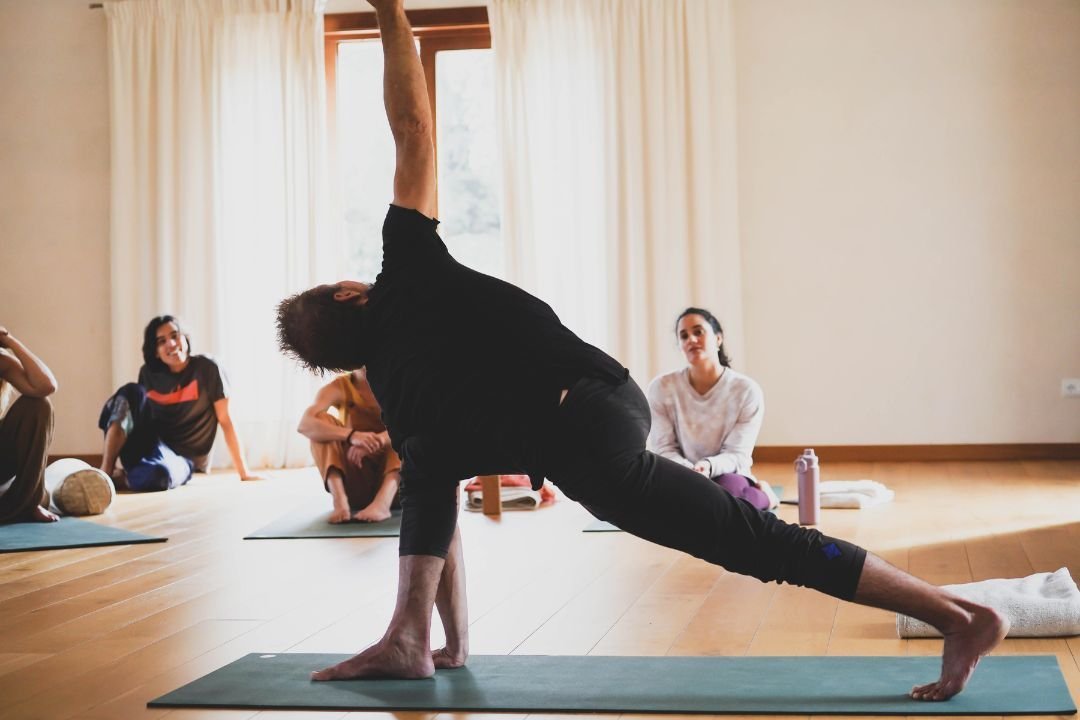
4. Advanced Series B, C, and D (Sthira Bhaga)
The Advanced Series B, C, and D are part of the Sthira Bhaga series in Ashtanga Yoga. These series are less commonly practiced and taught due to their complexity and the high level of proficiency required. Information on these series is not as widely available as the Primary and Intermediate Series.
Advanced Series B
While a complete list is not available, some postures known to be part of this series include: Baddha Hasta Sirsasana A, B, C, and D
Advanced Series C and D
There is limited information available on these series. They are often considered to be part of the traditional Ashtanga system but are rarely practiced or documented in detail. Some sources suggest that these series might have been part of the original teachings but are not commonly included in modern practice. It’s important to note that the Advanced Series C and D remain elusive in terms of detailed lists of asanas. This lack of information could be due to the traditional nature of Ashtanga Yoga, where advanced teachings are often passed down orally from teacher to student rather than being widely published.
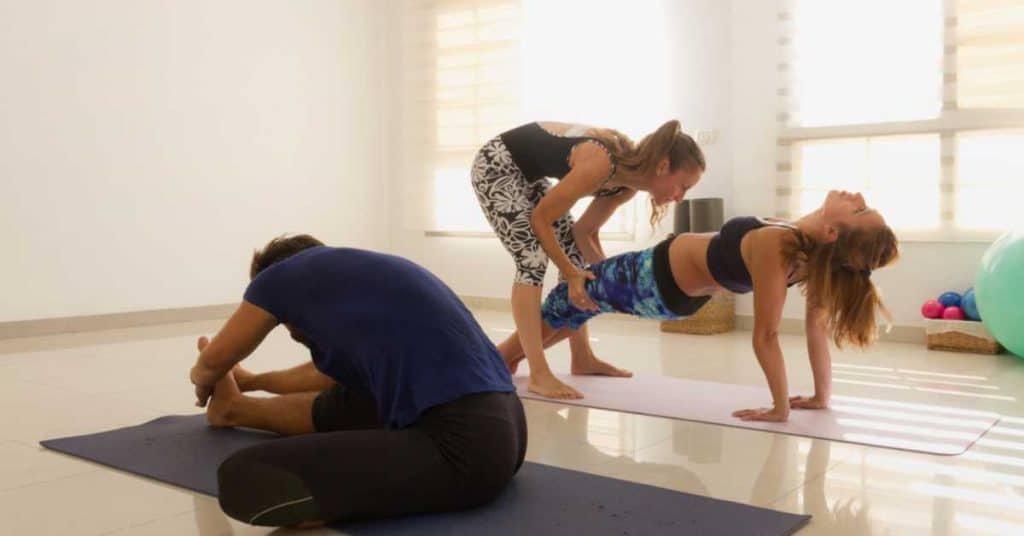
The Benefits: A Holistic Approach to Wellness
The practice of Ashtanga Yoga offers a wide array of benefits that span both physical and mental well-being. Scientific studies and practitioner experiences have highlighted numerous positive effects:
Physical Benefits:
✔ Strength and Flexibility: The challenging postures in Ashtanga Yoga target various muscle groups, building strength and increasing flexibility.
✔Cardiovascular Health: The dynamic nature of the practice improves heart health and circulation.
✔ Improved Digestion: The practice stimulates the digestive system and increases circulation to internal organs.
✔ Enhanced Breathing: The focus on breath synchronization improves lung capacity and oxygen intake.
✔ Increased Range of Motion: Regular practice enhances joint health and mobility.

Mental Benefits:
✔ Stress Reduction: The practice has been shown to lower cortisol levels, reducing stress and anxiety .
✔ Mental Focus and Clarity: The concentration required in Ashtanga Yoga helps calm the mind and improve focus.
✔ Psychological Well-being: Studies have found that Ashtanga Yoga can improve various aspects of psychological health, including reducing symptoms of depression and enhancing self-esteem.
✔ Self-awareness and Mindfulness: The practice fosters a greater sense of self-awareness and present-moment consciousness.
✔ Improved Sleep: The stress-reducing effects of Ashtanga Yoga can lead to better sleep quality.

The Modern Landscape: Ashtanga in Contemporary Practice
Today, Ashtanga Yoga holds a significant place in the modern yoga landscape. Its structured approach and emphasis on self-practice appeal to those seeking a disciplined and challenging practice that offers a clear path to progress . The practice has inspired numerous other yoga styles, including vinyasa and power yoga, demonstrating its far-reaching influence on contemporary yoga.
However, like any practice with deep roots and a strong tradition, Ashtanga Yoga has faced its share of debates and criticisms. Some argue that its rigid structure can be limiting, while others praise this very aspect as a source of discipline and consistency. The famous quote attributed to Pattabhi Jois, “Ashtanga Yoga is 99% practice and 1% theory,” reflects the emphasis on practical application over theoretical study . This approach highlights the belief that true understanding and realization come through consistent practice rather than intellectual pursuit alone.
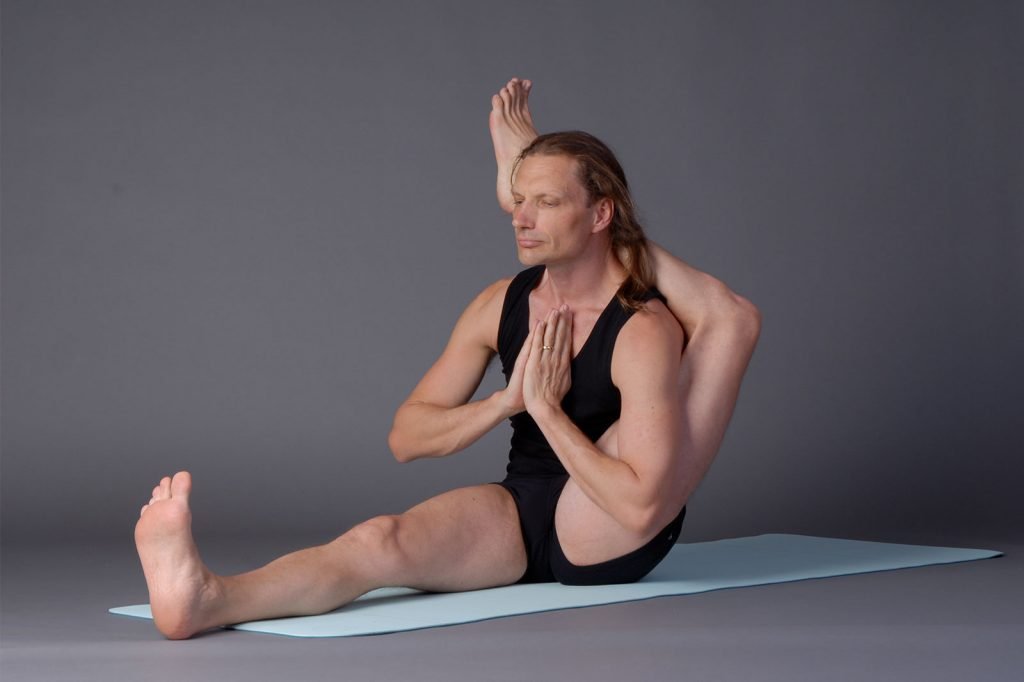
Conclusion: The Transformative Power of Ashtanga Yoga
Ashtanga Yoga offers a comprehensive path to physical health, mental clarity, and spiritual growth. Its structured approach, rooted in ancient wisdom yet adapted for modern practitioners, provides a framework for personal transformation that goes far beyond the yoga mat. Whether you’re seeking physical challenge, stress relief, or a deeper connection to yourself and the world around you, Ashtanga Yoga offers a rich and rewarding journey.
As we navigate the complexities of modern life, practices like Ashtanga Yoga remind us of the power of discipline, self-awareness, and holistic well-being. By embracing the eight limbs of yoga and committing to regular practice, we open ourselves to a world of possibility – one breath, one movement, one moment at a time.In the words of Sri K. Pattabhi Jois, “Do your practice and all is coming.” This simple yet profound statement encapsulates the essence of Ashtanga Yoga – a practice that, through dedication and perseverance, has the power to transform not just our bodies, but our entire being.
